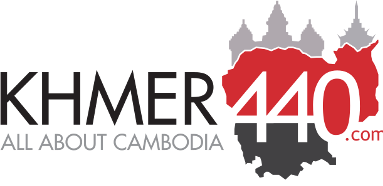The Road to Angkor: Christopher Pym
 This long out-of-print book describes the author’s journey from coastal Vietnam to Angkor in the year 1957.
This long out-of-print book describes the author’s journey from coastal Vietnam to Angkor in the year 1957.
Pym had visited Cambodia a few years before and knew of a twelfth century road that once ran from Angkor all the way to the city of Binh-Dinh on the South China Sea. Binh-Dinh had even farther back been the site of the capital of the Kingdom of Champa. He decided to walk the route in search of any traces of this old road, or any of the resting houses which he knew had once been built at regular intervals along the way.
His choice of transportation was looked on as peculiar even at that time, but it becomes obvious as one reads on that no other method would have been feasible, as most of the roads and bridges built through the region not long before by the French had already been destroyed in their war with the Viet-Minh, while others had fallen into disrepair.
He begins his journey into the hills of Vietnam up a route called “ Col d’Ankhe”, which seems promising, but as things happen he does not find any sign of the ancient road until he is well to the west of the Mekong. He describes the hill-tribe’s difficulties with the new South Vietnamese administration, and the resentment these people felt for the ‘Vietnamization’ programs which included mandatory Vietnamese language lessons in the villages, often taught by tribal elders who knew little of the imposed language themselves. Another part of this program which led to some bitterness was the settlement of Vietnamese refugees in the mountainous tribal areas.
On approaching the border, he finds it closed. He is aware that the southern border is open between the two countries but is later informed that this remote crossing had been blocked to prevent Vietnamese loggers coming across to pilfer the forests. Pym could speak a few languages, and would generally speak to the Vietnamese in French, but later on his knowledge of the Khmer language held him in good stead. As he progressed through the different tribal areas towards his destination he found more and more words that the various languages have in common with Khmer, and conversation improved for him.
Talk with locals often centered on tigers, which appear to have been common enough at the time. At one stage he comes across a recently-killed one, apparently worth a small fortune at about $70 back then, and then as now the most valuable part being the bones. He describes the tiger steak that he, reluctantly at first, eats later that evening as most delicious. Wild animals were seen as the biggest threat in the hills, and although the author mentions various military outfits wandering about the area, the banditry which prevented Norman Lewis from exploring a decade before certainly doesn’t seem to have bothered him a lot.
His journey through Cambodia is spent outside the main rice growing lowlands, and he comes across many villages which have been ravaged by floods and droughts, the inhabitants having to forage in the forest for wild potatoes and tree-bark. A program of Cambodianization was underway at the time in these nether regions, but with little funding available this was largely ineffective.
Eventually reaching the ruins of the Angkorian city of Prah Khan, inhabited by a solo and somewhat unconventional monk, he takes some time to examine the Buddhist beliefs that seem to intrigue him. After leaving Prah Khan, the route of the ancient road becomes easy to trace, and he finds numerous old bridges and ruins dotted along the remainder of his expedition towards Angkor.
Christopher Pym’s book tells of a time when much of the country was either inaccessible or ignored, but in many ways we can see that little has really changed since the time he visited. Even though much of the writing is made up of wise observances of cultural and religious matters which he without doubt had a fine eye for, I feel he could have been far more descriptive without boring the reader. However, his adventurous voyage is accomplished with little complaint of the obvious hardships, and would put most modern travelers on their rushed and pampered journeys to shame.
Dermot Sheehan


